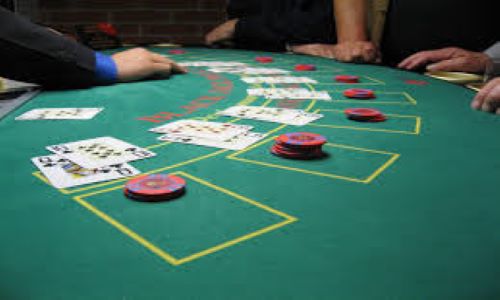The Evolution of Blackjack
 By
By
Evolution of 21: From European Roots to Online Blackjack
Blackjack has a rich history spanning continents and centuries. Today, it’s one of the most popular Casino Lukki games worldwide, but its origins reach back to 17th century France. Understanding the game’s storied past provides insight into its enduring appeal across eras and cultures. This article traces blackjack from its earliest recorded forms to its current digital incarnations. You’ll learn how the game evolved over time and key milestones in its development. We’ll also cover basics on how to play blackjack online for those new to virtual twenty-one. Earliest accounts of the game “vingt-et-un” (twenty-one) date to the 1600s in France. The precursor used a traditional 52-card deck with gameplay similar to modern blackjack. However, betting rules and options differed greatly in early versions. The French game "vingt-et-un" migrated across Europe over the next hundred years. In the 1700s, twenty-one emerged in Spain under the name “one and thirty.” Here, players could double down on initial bets. This innovation remains a strategic mainstay of blackjack today. As twenty-one continued spreading, the betting round allowing doubles became known as the Spanish Rule. By the early 1800s, an early form called “Pontoon” was popular in England. Despite localized rule variations, the essential concept of drawing cards to reach 21 (or closest to it) remained consistent. In the late 1800s, twenty-one arrived in the United States via European immigration. American gambling houses began offering the game in the early 1900s. Crucially, U.S. casinos introduced more player-friendly rules like: Dealer standing on all 17s Doubling down on any number of cards Pairs splitting up to 3 times These rules dramatically shifted advantage from dealer to player compared to earlier versions. The influx of twenty-one to Nevada during the casino boom of the 1930s sealed its legacy in the United States. Modern blackjack coalesced in the early 1960s as the “Atlantic City” ruleset. Casinos formally dubbed the game blackjack to differentiate from other versions of 21. This standardized American blackjack is played today, though minor regional variations still occur. 1600s – Vingt-et-un emerges in France using modern 52-card decks 1700s – One and thirty appears in Spain allowing doubles 1800s – Pontoon popularizes an early form in England 1900s – Blackjack played in U.S. gambling houses under various names 1930s – Casino expansion brings twenty-one to Las Vegas 1960s – Standardization as blackjack under Atlantic City rules For decades, blackjack flourished as a staple casino game globally. But the internet radically expanded access and options for playing. The first online casinos launched in the mid-1990s. However, limitations of early internet speeds and connectivity hindered adoption of online blackjack. By the early 2000s, broadband penetration and improved compression algorithms helped power the first boom of internet blackjack. Software companies created digital versions replicating the look, sounds, rules, and experience of live dealer blackjack. Multi-hand blackjack allowing players to bet on multiple hands simultaneously also debuted during this period. Over 20 years, internet twenty-one has matured into an immersive, feature-rich experience. Let’s review the basics on how to play blackjack games online. While software innovations enhanced blackjack’s online appeal, core gameplay fundamentals remain unchanged. Whether playing virtually or in-person, the goal is still to form a hand value closer to 21 than the dealer without exceeding it. Here are basics on playing internet blackjack: Use real money or free play chips to place initial bet Receive first two cards representing hand value Decide to hit, stand, double down, split, or surrender Dealer reveals hand through similar drawing decisions Compare final player and dealer hands to determine winner Unique to online blackjack, software assists with moves like splitting, doubling, and side bets. Hand totals and guidance displays help newcomers learn optimal strategies. Players can adjust the speed of gameplay and switch between public and private tables. Bonuses and loyalty programs incentivize online twenty-one with cashback, free hands, and other perks. Progressive blackjack jackpots reaching into the millions are also popular. For practice, free blackjack games replicate real money versions. Over 300 years since its recorded beginnings, blackjack continues evolving via internet play. Understanding its rich history provides perspective into how twenty-one has endured across centuries and cultures. This context also shows how modern blackjack retains the same essence of vingt-et-un that captivated European gamblers back in the 1600s.From Chemin de Fer to Atlantic City: Blackjack Through the Ages
Key Milestones in Blackjack History
Transition to Online Blackjack
How to Play Blackjack at Online Casinos
Conclusion




